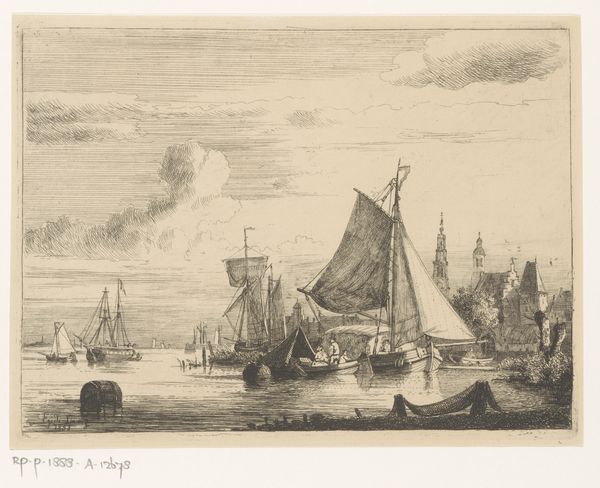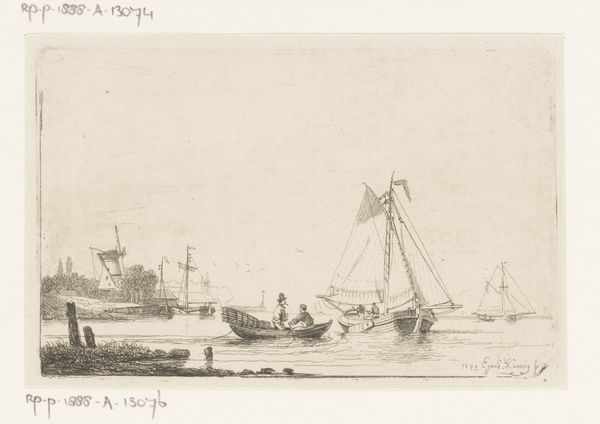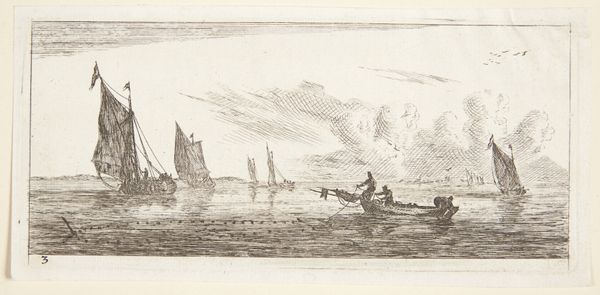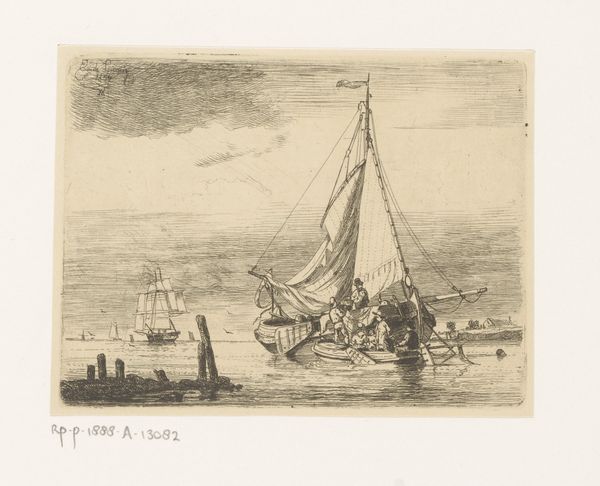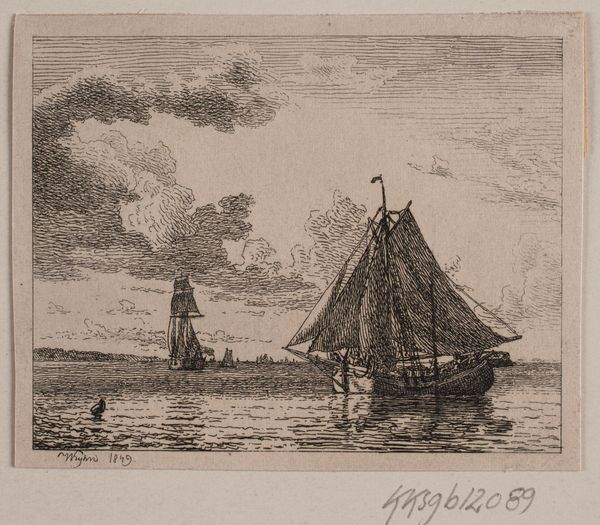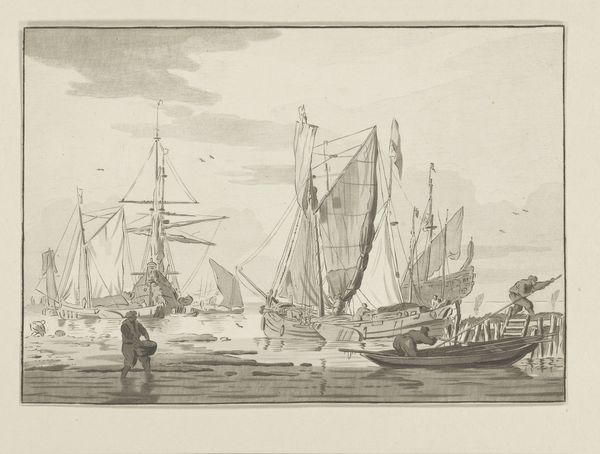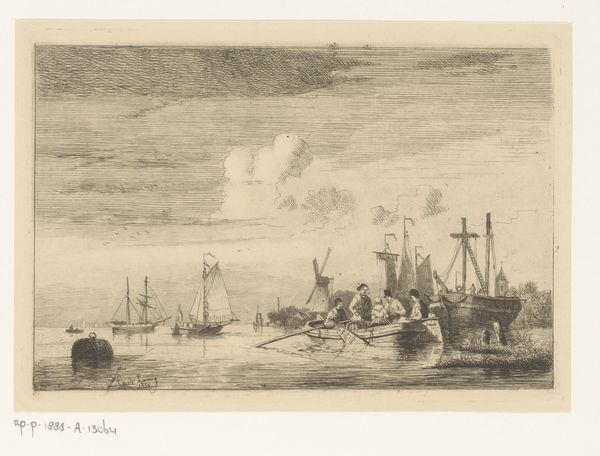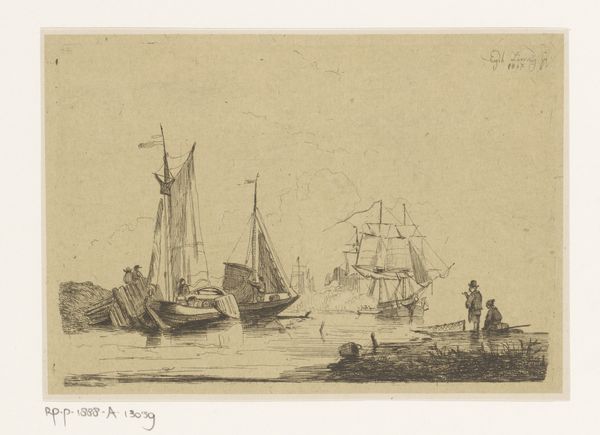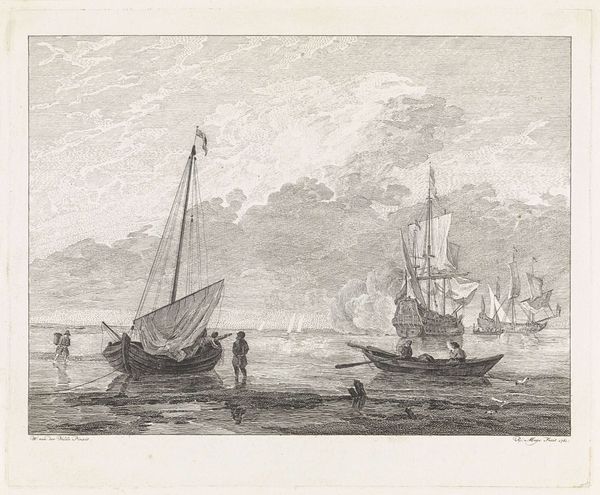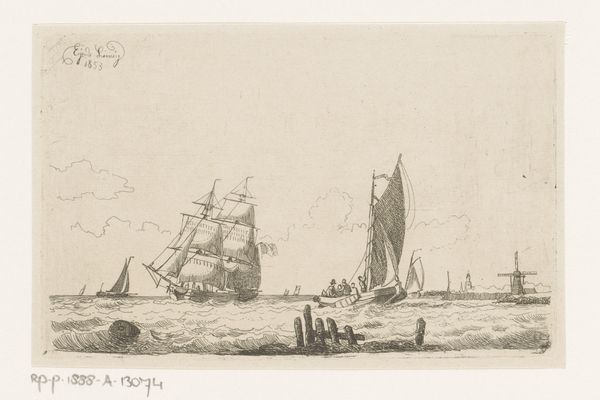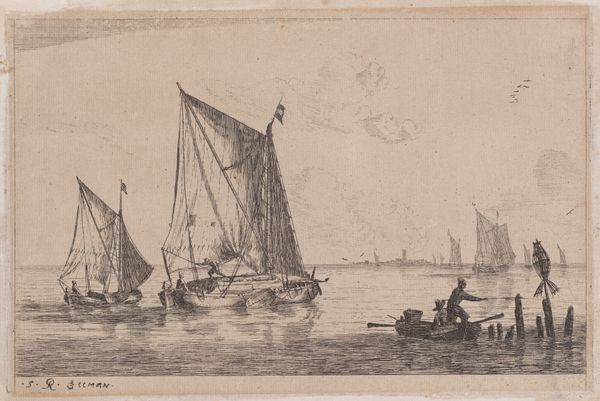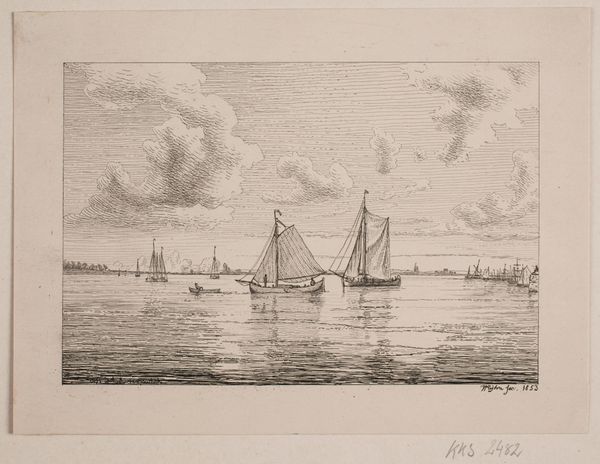
Dimensions: height 90 mm, width 140 mm
Copyright: Rijks Museum: Open Domain
Curator: Here we have Egidius Linnig's etching and engraving "Two Men in a Rowboat Near Doel" from 1853, held at the Rijksmuseum. Editor: Immediately, the tonal range strikes me—a study in sepia, or perhaps the inherent limitations of the medium enhancing a generally placid mood. A romantic portrayal of everyday life by the water. Curator: Indeed. Linnig’s career focused significantly on maritime scenes. Works like this highlight the significance of water to commerce and leisure in the 19th-century Low Countries. Ports such as Doel experienced periods of prosperity tied to maritime trade, shaping communities around waterways. Editor: Observe the line work, how each stroke delicately captures the sailcloth's billow, the reflection of light upon the water's surface. Note how the texture becomes flatter and looser towards the left of the scene, around the windmill. This transition emphasizes the play of perspective and relative spatial relationships that contribute to its depth. Curator: The artist employs genre painting elements by capturing common people engaged in daily activities. Yet there's an interesting dynamic considering Doel’s location near Antwerp, a major port city: Does Linnig portray the ordinary, or is he presenting a strategic counter-narrative to burgeoning industrialization through these quiet harbor scenes? Editor: It is in the details that such decisions echo: a small vessel close to two men. Yet just behind them sits a larger sail boat that leads us deeper into the space. He does seem to intentionally invite the viewer into a kind of perspectival investigation by using carefully chosen objects. Curator: Perhaps. His representation offers a counterpoint, if not critique, on broader modernization projects of the era, underlining nature's quiet permanence against the industrial world. Editor: It’s impressive to see so much information and atmospheric perspective generated through relatively basic methods of pure mark-making, but seeing the greater socio-economic implications only adds depth to the work. Curator: Precisely. In summary, Linnig’s print is much more than just a picture of men on a boat near Doel; it is a social commentary—revealing how communities shaped their identities in relationship to commerce and modernization during that era. Editor: A well-rendered reflection on spatial, elemental, and human relations of its era.
Comments
No comments
Be the first to comment and join the conversation on the ultimate creative platform.
